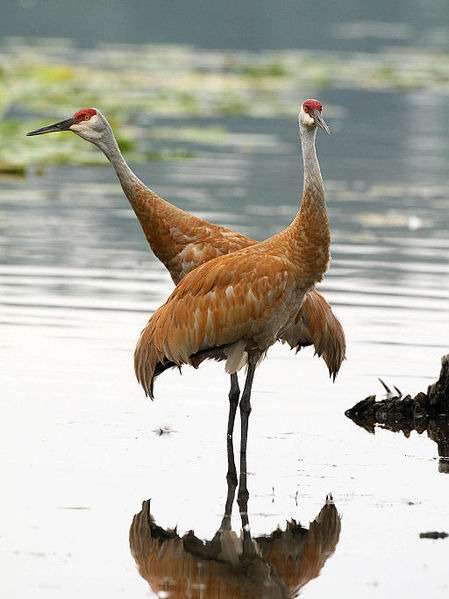The sandhill crane is a species of large crane of North America and extreme northeastern Siberia. The common name of this bird refers to their habitat such as the Platte River, on the edge of Nebraska's Sandhills on the American Great Plains. Sandhill cranes are known to frequent the edges of bodies of water. The central Platte River valley in Nebraska is the most important stopover area for the nominotypical subspecies, the great sandhill crane, with up to 450,000 of these birds migrating through annually.
Sandhill crane
Sandhill crane in flight at the Llano Seco Unit of the Sacramento National Wildlife Refuge Complex, California, USA
An immature Florida sandhill crane walks along the shore of Lake Cecile near Kissimmee, Florida.
Sandhill crane in flight at the Sacramento National Wildlife Refuge
Cranes are a type of large bird with long legs and necks in the biological family Gruidae of the order Gruiformes. The family has 15 species placed in four genera which are Antigone, Balearica, Leucogeranus, and Grus. They are large birds with long necks and legs, a tapering form, and long secondary feathers on the wing that project over the tail. Most species have muted gray or white plumages, marked with black, and red bare patches on the face, but the crowned cranes of the genus Balearica have vibrantly-coloured wings and golden "crowns" of feathers. Cranes fly with their necks extended outwards instead of bent into an S-shape and their long legs outstretched.
Crane (bird)
The bare area of skin on the face of a sandhill crane can change colour or even expand in area when the bird is excited.
The long coiled trachea that produces the trumpeting calls of cranes (sarus crane, Antigone antigone)
Grey-crowned crane (Balearica regulorum) in captivity at Martin Mere, UK








